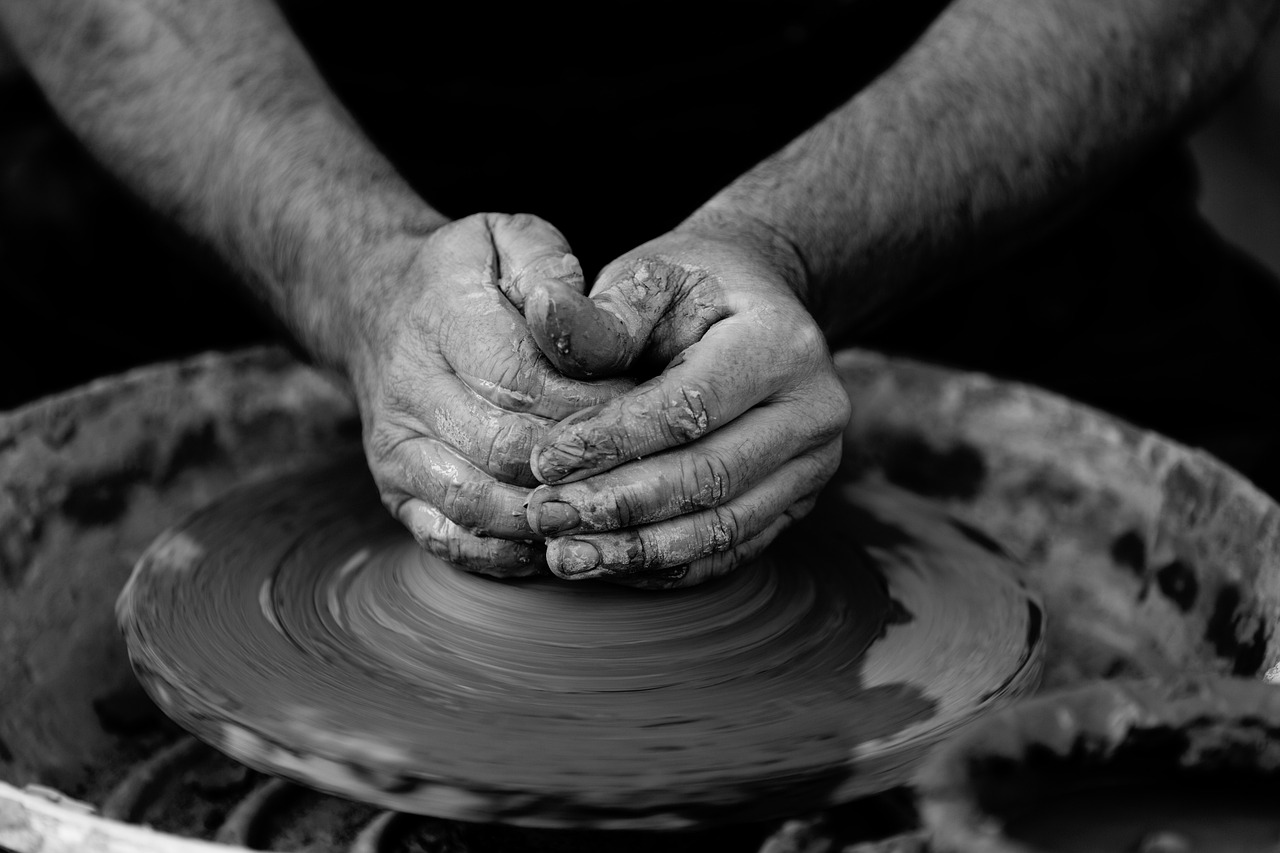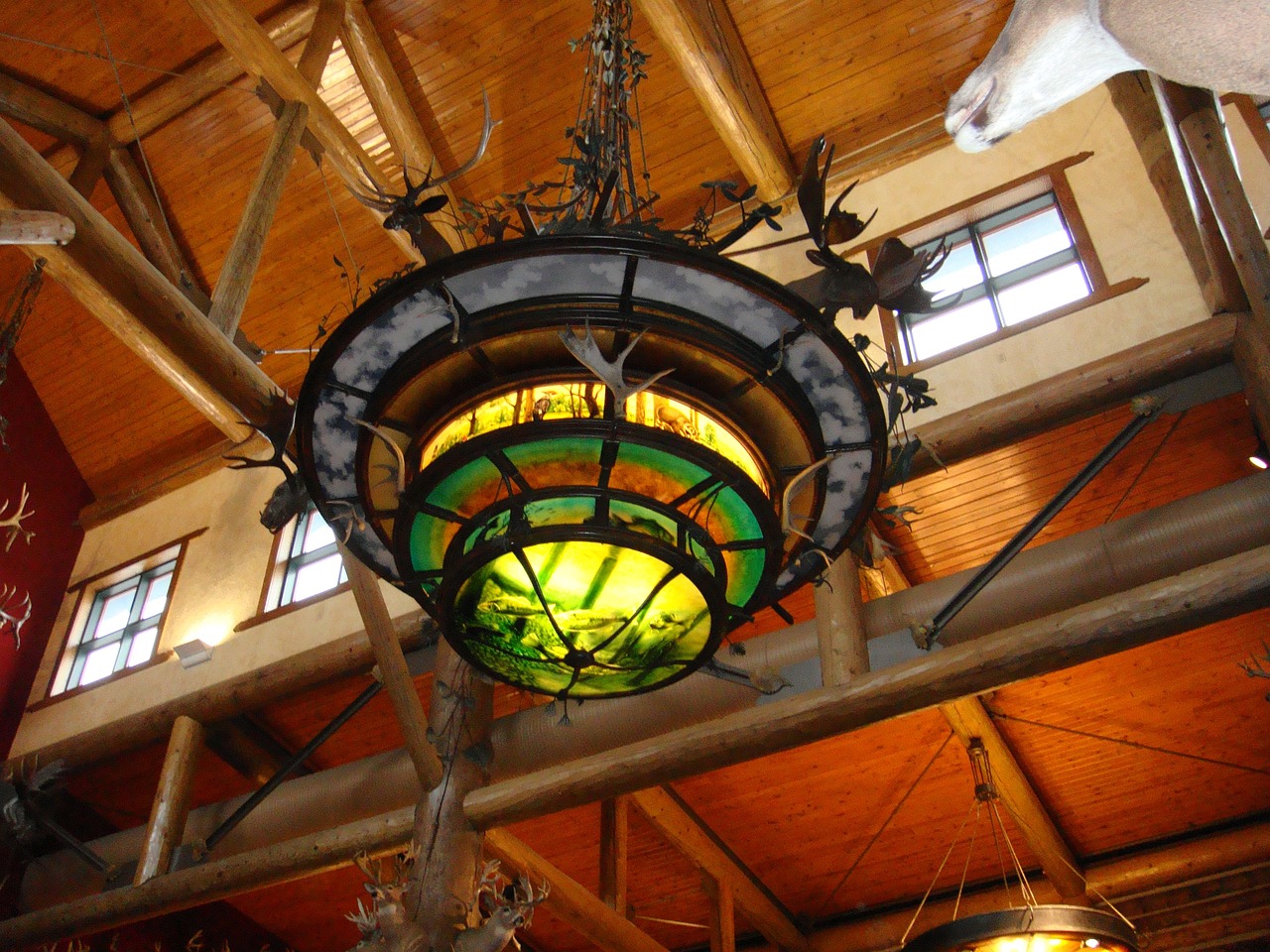Create Stunning Stained Glass Crafts with the Kids
Have you ever watched the sunlight dance through a beautifully crafted stained glass window? Imagine being able to create that magic right in your own home with your kids! Stained glass crafts are not just for adults; they can be a fun and educational activity for children, fostering creativity and fine motor skills. In this article, we will explore a variety of fun and engaging stained glass craft projects that are perfect for kids. From choosing the right materials to displaying your finished artwork, we’ll cover everything you need to know to make this crafting experience enjoyable for the whole family.
Stained glass crafting can be a delightful journey where kids can express themselves artistically. It’s like painting with light! As they cut, shape, and assemble glass pieces, they are not just creating art; they are learning valuable skills like patience, precision, and problem-solving. So, gather your supplies, roll up your sleeves, and let’s dive into the colorful world of stained glass crafts!
Before you start crafting, it’s essential to select the appropriate materials. The right choices can make all the difference in the success of your stained glass projects. When working with kids, safety and ease of use should be your top priorities. For glass, consider using pre-cut glass pieces or glass-like plastic sheets that are much safer for little hands. You can find these at craft stores or online, and they come in a variety of colors and textures that mimic real stained glass.
Next, let’s talk about adhesives. A good clear-drying glue is vital for holding your pieces together. Make sure it’s non-toxic and safe for kids. Additionally, you’ll need some basic tools, which we will discuss in detail later. Remember, the goal is to create a fun and safe environment where kids can explore their creativity without any worries.
Understanding the fundamental techniques of stained glass crafting is essential for creating stunning pieces of art. The primary techniques include cutting, shaping, and assembling glass pieces. While these might sound complex, with the right guidance, even kids can master them! Let’s break it down into manageable steps, starting with the all-important skill of cutting glass safely.
Learning to cut glass safely is crucial in stained glass crafting. It’s important to use the right tools and techniques to ensure a safe crafting environment. For kids, we recommend using glass cutters that are designed for beginners. These tools typically have safety features that make them easier and safer to handle.
Here’s a quick rundown of essential cutting tools for stained glass projects:
- Glass Cutter: A simple tool that scores the glass, making it easier to break.
- Running Pliers: Used to snap the glass along the scored line.
- Safety Glasses: Always ensure kids wear protective eyewear to prevent any accidents.
To simplify the glass cutting process, here’s a clear, step-by-step guide:
- Start by placing the glass on a sturdy surface.
- Wear safety glasses and hold the glass cutter at a 45-degree angle.
- Score the glass with a firm, even pressure.
- Use running pliers to gently snap the glass along the scored line.
Once the glass is cut, it’s time to assemble your masterpiece! This is where creativity truly shines. You can use a variety of adhesives to join the pieces together. For a more traditional approach, consider using a lead came or copper foil to hold the pieces in place. The key is to ensure that the pieces fit snugly together and that the adhesive is applied evenly for a seamless finish.
Inspiration can spark creativity in stained glass projects. Encourage kids to explore various design ideas, from simple patterns to intricate designs that reflect their personalities. Think about nature-inspired themes like flowers, trees, and animals, which are often easier for kids to replicate and can lead to vibrant, colorful pieces. You can also incorporate seasonal and holiday themes, making the crafting experience relevant and fun throughout the year.
After all that hard work, it’s time to showcase your beautiful stained glass pieces! How you display them can significantly enhance their visual impact. Positioning your crafts in direct sunlight can create a stunning effect, making the colors pop and the designs come to life. Consider using creative display ideas such as framing the pieces, hanging them in windows, or placing them on stands to catch the light just right.
Sunlight can dramatically enhance the beauty of stained glass. When displayed correctly, the light will filter through the glass, casting colorful shadows and illuminating the entire room. Think of it as a living piece of art that changes throughout the day!
Here are some creative ideas for displaying your stained glass pieces:
- Use decorative frames to create a gallery wall.
- Hang pieces from the ceiling to create a stunning mobile.
- Place them on windowsills where they can catch the light.
Q: What materials are safe for kids to use in stained glass crafts?
A: For kids, it’s best to use pre-cut glass pieces or glass-like plastic sheets. Always choose non-toxic adhesives and ensure that safety glasses are worn during the crafting process.
Q: How can I ensure my kids are safe while cutting glass?
A: Always supervise children while they are cutting glass. Use beginner-friendly cutting tools that have safety features, and make sure they wear protective eyewear.
Q: What are some easy design ideas for kids?
A: Nature-inspired designs such as flowers, butterflies, or trees are great starting points. Seasonal themes like snowflakes for winter or leaves for fall can also inspire creativity!

Choosing the Right Materials
When it comes to creating stunning stained glass crafts with kids, is absolutely crucial. It's like building a house; if you don't have the right foundation, everything else can crumble. So, let’s dive into the essentials you’ll need to ensure a successful and enjoyable crafting experience. First and foremost, you'll need to select the glass. For kid-friendly projects, consider using acrylic sheets instead of traditional glass. Why? Because they are lightweight, shatter-resistant, and come in a plethora of colors, making them perfect for young artists. However, if you want to use actual glass, make sure to opt for pre-cut glass pieces that are specifically designed for crafting.
Next up is the adhesive. It's important to choose a strong yet safe option. Clear-drying craft glue, like PVA glue, works wonders for bonding acrylic pieces. If you're working with glass, look for a specialized stained glass adhesive that is non-toxic and suitable for kids. This ensures that the bond will hold while keeping safety in mind. Don't forget about the tools! Having the right tools can make or break your crafting experience. Here’s a quick rundown of essential tools you might need:
| Tool | Purpose |
|---|---|
| Glass Cutter | To score the glass for cutting. |
| Running Pliers | To break the glass along the scored line. |
| Safety Glasses | To protect eyes while cutting glass. |
| Cutting Mat | To provide a safe surface for cutting. |
Now that we've covered the basics, let’s talk about safety. Always ensure that children are supervised when handling any tools, especially sharp ones. It's a good idea to set up a dedicated crafting area where kids can freely express their creativity without the worry of making a mess. Cover the workspace with newspaper or a plastic sheet for easy cleanup, and make sure to have a first-aid kit handy, just in case. Remember, crafting should be fun and safe!
Lastly, consider adding some embellishments to your stained glass creations. Items like beads, ribbons, or even glitter can add a unique touch to your projects. These materials are not only fun but can also ignite your child's creativity, allowing them to explore their artistic side even further. So gather your materials, roll up your sleeves, and get ready for an exciting stained glass crafting adventure!

Basic Techniques for Stained Glass Crafts
When diving into the enchanting world of stained glass crafts, understanding the basic techniques is crucial for creating stunning pieces. Think of it as learning the foundational chords of a song before you can play a beautiful melody. In stained glass, these foundational skills include cutting, shaping, and assembling the glass pieces. Each step is not just a task; it's an opportunity for creativity and self-expression. Let's explore these techniques together!
First things first, safety is paramount. Cutting glass can sound intimidating, but with the right tools and precautions, it can be a fun and safe activity for kids. Imagine you're a chef in a kitchen; you wouldn't want to handle a knife without knowing how to use it properly, right? The same goes for glass cutting. Always ensure that children are supervised, and consider using safety goggles to protect their eyes from any tiny shards. It's also wise to set up a designated crafting area where kids can work without distractions.
Now, let’s talk about the essential cutting tools you'll need. Here’s a quick rundown:
- Glass Cutter: This tool scores the glass, allowing it to break along the line.
- Breaking Pliers: These help to snap the glass along the scored line.
- Safety Goggles: Protects eyes from glass shards.
- Cutting Mat: A protective surface that absorbs impact and keeps your workspace safe.
With these tools in hand, you're well on your way to cutting glass like a pro!
Here’s a step-by-step guide to simplify the glass cutting process:
- Prepare Your Workspace: Ensure that your work area is clean and free of clutter.
- Measure and Mark: Use a ruler to measure the desired size of your glass piece and mark it with a pencil.
- Score the Glass: Use the glass cutter to score along the marked line. Apply even pressure for a clean cut.
- Break the Glass: Position the scored line over the edge of your cutting mat and gently apply pressure with your breaking pliers to snap it.
- Clean Up: Always clean up any shards or pieces to maintain a safe crafting environment.
By following these steps, even kids can learn to cut glass safely and effectively, turning them into little artisans in no time!
Once the glass is cut, the next exciting phase is assembling your masterpiece. Think of this step as putting together a puzzle, where each piece fits perfectly to create a beautiful image. You can join the glass pieces using different techniques, such as copper foil or lead came, depending on the complexity of your design. Copper foil is great for intricate designs, while lead came works well for larger, more straightforward pieces. Ensure that you have the right adhesive for your chosen method, as this will determine the durability of your creation.
As you assemble, encourage kids to get creative with their designs. Let them experiment with colors and shapes, mixing and matching to find what resonates with them. This phase is all about exploring their artistic instincts and seeing how the light plays through the glass!
Q1: Is stained glass crafting safe for kids?
A1: Yes, with proper supervision and safety precautions, stained glass crafting can be a safe and enjoyable activity for children.
Q2: What age is appropriate for children to start stained glass crafts?
A2: Children as young as 8 can start with supervised projects, while older kids can handle more complex tasks as they gain confidence.
Q3: What materials are best for beginners?
A3: For beginners, it’s best to use pre-cut glass pieces, copper foil, and safe adhesives. This simplifies the process and allows for a focus on creativity.
Q4: How can we make our stained glass more durable?
A4: Using quality adhesives and proper assembly techniques will enhance the durability of your stained glass creations.

Cutting Glass Safely
When it comes to stained glass crafts, is one of the most crucial skills to master. Imagine you're a sculptor, and the glass is your canvas. Just like a painter needs the right brushes, you need the right tools and techniques to create your masterpiece without any mishaps. Safety should be your number one priority, especially when kids are involved. So, let’s dive into the essential steps and tools that will keep everyone safe while having fun!
First off, it's important to create a safe workspace. Clear the area of any clutter and ensure that you have a sturdy table to work on. Ideally, this space should be well-lit, allowing you to see the glass clearly while minimizing the risk of accidents. Always wear protective gear, such as safety goggles and gloves. Safety goggles will protect your eyes from any tiny shards that may fly off during cutting, while gloves will help prevent cuts on your hands. Remember, safety is not just a precaution; it's a necessity!
Now, let’s talk about the tools you’ll need. A few essential items are required for cutting glass properly:
- Glass Cutter: This tool scores the glass, making it easier to break along the line.
- Running Pliers: These help to snap the glass along the scored line.
- Cutting Mat: A protective surface that absorbs impact and prevents damage to your table.
- Oil for the Cutter: A small drop of cutting oil can make the cutting process smoother.
Once you have your tools ready, it’s time to learn the cutting technique. Start by measuring and marking the glass where you want to cut. Use a ruler to ensure straight lines and then score the glass with your cutter, applying even pressure. It’s like drawing a line on paper, but with a little more finesse. After scoring, place your running pliers on either side of the score line, squeezing gently to snap the glass apart. This method will allow you to create clean cuts without any jagged edges.
Finally, always remember to clean up your workspace after cutting. Dispose of any glass shards properly, and never leave them lying around. It's like cleaning up after a painting session; you want to ensure that your space is safe for the next round of creativity. By following these steps, you’ll not only keep everyone safe but also set the stage for a fun-filled stained glass crafting experience!
Q: What safety gear do I need for cutting glass?
A: Always wear safety goggles and gloves to protect your eyes and hands from any potential injuries.
Q: Can kids cut glass themselves?
A: While kids can participate in cutting glass, it's essential that they are supervised by an adult who can guide them through the process safely.
Q: What should I do if I cut myself?
A: If you get a cut, clean the area with soap and water, apply an antiseptic, and cover it with a bandage. If the cut is severe, seek medical attention.
Q: Are there any alternatives to glass for kids?
A: Yes! If you're concerned about safety, consider using plastic sheets or acrylic glass, which are much safer and easier to handle.

Essential Cutting Tools
When diving into the world of stained glass crafts, having the right tools is absolutely crucial. Imagine trying to bake a cake without a mixer or a whisk! The same principle applies here—without proper cutting tools, your stained glass experience may turn into a frustrating endeavor rather than a fun and creative outlet. So, let's break down the essential cutting tools that will make your crafting journey smooth and enjoyable.
The first tool you'll need is a glass cutter. This handy device comes in various shapes and sizes, but its primary function remains the same: to score the glass. A good-quality glass cutter will allow for precise cuts, making it easier to create the shapes and designs you envision. Look for one that feels comfortable in your hand, as this will help you maintain control while cutting.
Next up is the cutting mat. Think of this as your crafting canvas. A cutting mat provides a safe surface to work on, protecting both your table and the glass from unwanted damage. This is especially important when you're working with children, as it helps to create a dedicated space for creativity without the worry of making a mess.
Additionally, you'll want to have a pair of gloves and safety goggles at the ready. Safety should always be your top priority, especially when kids are involved. Glass can be sharp and unpredictable, so wearing gloves protects little fingers from cuts, while goggles shield their eyes from any flying shards. It's all about creating a safe environment for everyone to enjoy the crafting process.
Another essential tool is the breaker tool. Once you've scored the glass with your cutter, a breaker tool helps you snap the glass along the scored line. It's a simple yet effective tool that can make all the difference in ensuring clean cuts. Just remember, practice makes perfect. The more you use it, the more comfortable you'll become!
Finally, consider investing in a ruler and a marker for measuring and marking your glass before cutting. A ruler helps ensure precise measurements, while a marker allows you to outline your designs clearly. This step is particularly important for intricate patterns where accuracy is key.
In summary, the right cutting tools can transform your stained glass crafting experience from daunting to delightful. Always remember to prioritize safety and invest in quality tools that will serve you well as you embark on this colorful journey. Happy crafting!
Q: Can I use regular glass for stained glass projects?
A: It's best to use glass specifically designed for stained glass projects, as it is easier to cut and comes in a variety of colors and textures.
Q: Is it safe for kids to cut glass?
A: With proper supervision and safety gear, children can safely participate in glass cutting. Always prioritize safety and start with simple projects.
Q: What should I do with leftover glass pieces?
A: Leftover glass can be used in future projects or can be creatively repurposed into mosaics or garden art!

Step-by-Step Cutting Guide
Cutting glass might sound intimidating, but with the right approach and safety measures, it can be a fun and rewarding experience for kids and parents alike. Before diving into the actual cutting, it's essential to gather all the necessary tools and materials. You'll need a glass cutter, a cutting mat, safety glasses, and some gloves to protect those tiny hands. It’s like preparing for a little adventure, where safety is your trusty sidekick!
Now, let’s break down the cutting process into manageable steps:
- Prepare Your Workspace: Find a flat, stable surface where the kids can work comfortably. Lay down the cutting mat to protect the surface and provide a safe area for cutting.
- Measure and Mark: Using a ruler and a marker, measure the desired dimensions for your glass piece. Mark the lines clearly; this is where the magic will happen! Encourage kids to be as precise as possible, as this will help ensure clean cuts.
- Score the Glass: Place the glass on the cutting mat. Hold the glass cutter like a pencil and apply firm, even pressure while dragging it along the marked line. It should produce a distinct score line, like a gentle whisper of where to break.
- Snap the Glass: To break the glass along the score line, position the score line over the edge of the cutting mat. Gently press down on both sides of the glass to snap it apart. It’s like cracking a nut, where the right pressure will reveal the treasure inside!
- Check for Sharp Edges: After cutting, always inspect the edges for sharpness. If there are any jagged edges, use a glass grinder or a file to smooth them out. Safety first, after all!
Remember, practice makes perfect! It’s not just about getting the cut right; it’s about enjoying the process and learning together. Each cut is a step toward creating something beautiful, and with every piece, kids will gain confidence in their crafting skills.
As you embark on this glass-cutting journey, keep in mind that patience is key. Children may need some guidance and encouragement, especially when it comes to scoring the glass. Be there to cheer them on, and soon enough, they’ll be cutting glass like pros!
Here are some common questions parents might have about cutting glass with kids:
- Is it safe for kids to cut glass? Yes, with proper supervision and safety equipment, kids can safely participate in glass cutting. Always prioritize safety by providing gloves and goggles.
- What age is appropriate for kids to start cutting glass? Generally, children aged 10 and up can start learning to cut glass, but it ultimately depends on their maturity and ability to follow instructions.
- What should I do if the glass doesn’t cut cleanly? If the glass doesn’t break along the score line, try scoring it again more firmly or check your technique. It might take a few tries to get the hang of it!

Assembling Your Stained Glass Piece
Once you've cut your glass pieces, the next exhilarating step in your stained glass crafting journey is assembling your masterpiece. This process is where your creativity truly shines, as you bring together the beautiful shapes and colors you've carefully prepared. To start, it's essential to have the right materials at hand. You'll need a strong adhesive specifically designed for glass, copper foil or lead came, and a soldering iron if you choose to use soldering as your joining technique. Each method has its unique charm, so you might want to experiment and see which one you prefer!
When assembling your stained glass piece, the first thing to do is lay out your glass in the desired pattern. This is your chance to play around with the arrangement and see how the colors interact with each other. You might find that a piece looks completely different when placed next to another, so take your time with this step. Once you're satisfied with the layout, it's time to start adhering the pieces together. If you're using copper foil, carefully wrap the edges of each glass piece with the foil, ensuring that it adheres well. For those using lead came, you'll need to fit the glass into the came and then secure it in place.
After securing the pieces, the next step is to solder them together. If you're new to soldering, don’t worry! It’s easier than it sounds. Heat your soldering iron and apply the solder to the seams where the glass pieces meet. This not only holds them together but also adds an attractive finish to your art. Remember to work in a well-ventilated area and wear safety goggles to protect your eyes from any solder splatter. Safety first!
Here’s a quick overview of the assembly process:
| Step | Description |
|---|---|
| 1 | Lay out your glass pieces in your desired pattern. |
| 2 | Wrap the edges with copper foil or fit them into lead came. |
| 3 | Solder the seams together to secure the pieces. |
As you progress, don't hesitate to add personal touches to your stained glass piece. You can incorporate different textures or even paint some areas to create a unique effect. The beauty of stained glass crafting lies in its versatility, allowing you to express your personality and creativity. Once you’ve completed your assembly and soldering, give your piece a good clean to remove any fingerprints or residue. It’s the final touch that makes your creation shine!
Finally, take a moment to admire your handiwork. Assembling your stained glass piece is not just about putting glass together; it’s about creating a work of art that you can be proud of. Remember, every piece you create is a reflection of your imagination and effort. So, gather your family, share your creations, and bask in the joy of crafting together!
- What type of glass is best for beginners? Clear or colored glass sheets are ideal for beginners as they are easy to cut and work with.
- Can I use regular glue for stained glass projects? No, it’s best to use adhesives specifically designed for glass to ensure a strong bond.
- Is soldering necessary for all stained glass projects? Not necessarily! You can use copper foil or lead came without soldering, but soldering provides added durability.

Creative Design Ideas
When it comes to stained glass crafts, the sky's the limit! Unleashing your creativity can lead to stunning pieces that not only brighten up your home but also provide a fantastic bonding experience with your kids. So, where do we begin? Inspiration can come from anywhere, but let's focus on some exciting themes that can ignite your imagination and craft those beautiful stained glass artworks. From simple designs that even the youngest can tackle to more complex creations that challenge the older kids, there’s something for everyone!
One of the most rewarding aspects of stained glass crafting is the ability to personalize your designs. Think about what your kids love! Are they fascinated by nature, or do they get excited about seasonal holidays? This is where you can dive deep into your creative toolbox. For instance, nature-inspired designs can be as simple as a colorful butterfly or as intricate as a majestic tree. The beauty of stained glass is that the light streaming through can bring these designs to life in ways that paint simply can’t.
Imagine working on a project that features a vibrant sunflower. You could use yellows and browns for the petals and center, while greens could bring the leaves to life. Not only will your kids learn about colors and shapes, but they'll also engage with the natural world in a fun and artistic way. You can even encourage them to explore their surroundings for inspiration, perhaps asking them to collect leaves or flowers and translate those into their stained glass designs.
As the seasons change, so can your stained glass projects. Why not create a series of pieces that reflect the beauty of each season? In the spring, pastel colors can represent blooming flowers, while summer can be all about vibrant sun motifs. Fall can bring in warm oranges and reds to depict leaves, and winter can transform into a wonderland of blues and whites, perhaps with snowflakes or holiday themes. This approach not only keeps the crafting fresh but also teaches your kids to appreciate the changing world around them.
To further inspire you, here are a few that can spark your imagination:
- Animal Silhouettes: Crafting silhouettes of favorite animals can be a fun way to engage kids. Think about a playful cat or a soaring bird.
- Geometric Patterns: Simple shapes can be combined into beautiful patterns. This is a great way for kids to practice their shapes and colors.
- Holiday Symbols: Create pieces that celebrate various holidays, like a heart for Valentine's Day or a pumpkin for Halloween.
- Personalized Artwork: Encourage kids to draw their design ideas on paper first, then translate those into glass pieces.
As you explore these ideas, remember that the most important part of crafting is to have fun and enjoy the process. Each piece will not only be a representation of your creativity but also a treasured memory made together. So grab your materials, gather the kids, and let the stained glass magic unfold!
Q: What type of glass is best for kids' stained glass projects?
A: It's best to use acrylic sheets or pre-cut glass pieces for younger children as they are safer and easier to handle. Always supervise older kids when using real glass.
Q: How can we ensure safety while crafting?
A: Always wear protective gear, such as gloves and goggles, especially when cutting glass. Make sure the workspace is clear and that children are supervised at all times.
Q: Can we use paint instead of glass?
A: Absolutely! You can use glass paint on clear plastic sheets to create a stained glass effect without the complexities of cutting glass.

Nature-Inspired Designs
When it comes to stained glass crafts, nature serves as an endless source of inspiration. Imagine the vibrant colors of a blooming garden or the gentle sway of trees in the wind—these elements can transform simple glass pieces into breathtaking works of art. By channeling the beauty of the natural world, kids can explore their creativity and express their love for nature through their stained glass projects.
One of the simplest yet most effective ways to start is by choosing nature-themed patterns. Kids can create designs based on flowers, leaves, animals, and landscapes. For instance, a sunflower can be represented with bright yellows and browns, while a butterfly can be crafted using a mix of vibrant colors that mimic its delicate wings. The key is to encourage children to observe their surroundings and translate what they see into colorful glass pieces.
To help spark ideas, here are some popular nature-inspired designs that kids can try:
- Floral Designs: Create a stunning stained glass piece featuring roses, daisies, or tulips. The variety of colors and shapes can lead to a beautiful arrangement.
- Tree Silhouettes: A simple tree silhouette can be both striking and meaningful. Kids can use different shades of green and brown to depict various seasons.
- Animal Shapes: From birds to butterflies, animals can add a playful touch to stained glass art. Encourage kids to think about their favorite animals and how to represent them in glass.
- Landscapes: A scenic view with mountains, rivers, or sunsets can be an ambitious yet rewarding project that teaches kids about blending colors.
Moreover, integrating textures into these designs can enhance their visual appeal. For example, using frosted glass to represent clouds or textured glass to mimic the bark of a tree can add depth and interest. This not only makes the crafting process more engaging but also teaches kids about different materials and their effects.
As children embark on their stained glass journey, remind them that there are no strict rules. The beauty of art lies in its subjectivity. Encourage them to experiment with colors and shapes, and let their imagination run wild. They can even take inspiration from their own backyard or local parks, turning everyday sights into extraordinary stained glass masterpieces.
In conclusion, nature-inspired designs are not just about replicating what we see; they are about connecting with the world around us and expressing that connection through art. By fostering this creativity, we not only help kids develop their artistic skills but also cultivate a deeper appreciation for the beauty of nature.
Q: What materials do I need for nature-inspired stained glass crafts?
A: You'll need colored glass, glass cutter, adhesive, and safety gear like gloves and goggles. Additionally, you might want some textured glass for added effects.
Q: Can young children participate in stained glass crafts?
A: Yes, but with supervision. It's important to ensure they use kid-friendly materials and tools, and always prioritize safety.
Q: How can I display my stained glass creations?
A: You can hang them in windows, frame them, or use stands to showcase your artwork. Positioning them where they catch sunlight can really enhance their colors!

Seasonal and Holiday Themes
When it comes to stained glass crafts, can really ignite the imagination of kids and adults alike. Think about how much fun it would be to create vibrant decorations that celebrate various times of the year! From the crisp colors of autumn leaves to the twinkling lights of winter, the possibilities are endless. Not only do these crafts allow for creativity, but they also provide a wonderful opportunity to bond with your children as you explore different themes together.
For instance, during the spring season, why not encourage your kids to design stained glass pieces inspired by blooming flowers and buzzing bees? Bright colors like yellows, pinks, and greens can bring a lively touch to your home, making it feel fresh and inviting. Alternatively, as summer rolls around, kids can create fun beach-themed pieces featuring sun, sand, and surfboards, capturing the essence of those sunny days.
As the fall approaches, the rich hues of oranges, reds, and browns can be used to mimic the beauty of changing leaves. Kids can craft stained glass representations of pumpkins and acorns, bringing a warm and cozy feel to your decor. Then comes the winter season, where creativity can really shine! Think snowflakes, Christmas trees, and even festive ornaments. The shimmering glass can reflect the light beautifully, creating a magical atmosphere in your home.
To give you some inspiration, here are a few holiday-themed ideas that can be easily incorporated into your stained glass projects:
- Halloween: Create spooky designs featuring ghosts, bats, and jack-o'-lanterns.
- Thanksgiving: Stained glass turkeys, cornucopias, and autumn leaves can bring warmth to your home.
- Christmas: Design stained glass snowmen, Santa Claus, or even beautiful nativity scenes.
- Valentine's Day: Heart-shaped designs can spread love and joy, perfect for gifts or decorations.
By incorporating these seasonal themes into your stained glass crafts, you’ll not only create beautiful art pieces but also memories that last a lifetime. Each project can serve as a reminder of the joy and creativity shared during these special times of the year. So gather your materials, get your kids involved, and let the magic of stained glass transform your celebrations!
Q: What materials do I need for seasonal stained glass crafts?
A: You'll need kid-friendly glass (like acrylic or glass sheets), adhesives, cutting tools, and safety gear. Don't forget to have a clear workspace!
Q: Are stained glass crafts safe for kids?
A: Yes, but safety precautions are crucial. Always supervise children when using cutting tools and ensure they wear safety goggles.
Q: Can I use real glass for kids' projects?
A: It's best to use acrylic glass for younger kids as it's safer and less likely to break. For older kids, supervised glass cutting can be a fun challenge!
Q: How can I display our seasonal stained glass creations?
A: You can hang them in windows, use stands, or frame them. Sunlight can enhance the colors beautifully!

Displaying Your Stained Glass Creations
Once you've poured your heart and creativity into crafting stunning stained glass pieces, the next exciting step is showcasing them! Displaying your stained glass creations is not just about finding a spot; it’s about enhancing their beauty and making them a focal point in your home. Imagine how the sunlight dances through those colorful pieces, casting vibrant hues across your walls. It’s like bringing a piece of the rainbow indoors!
To truly bring out the magic of your stained glass art, consider the following tips on positioning and displaying your creations:
- Choose the Right Location: Ideally, place your stained glass pieces where they can catch natural light. Windowsills are perfect spots, but don’t overlook other areas like doorways or even hanging them in front of a light source.
- Use a Variety of Display Techniques: You can frame your stained glass art, hang it using decorative chains, or even set it on a stand. Each method offers a unique way to appreciate the craftsmanship and colors.
- Rotate Your Displays: To keep things fresh and exciting, consider rotating your stained glass pieces with the seasons or holidays. This not only keeps your decor interesting but also allows you to enjoy different artworks throughout the year.
One of the most enchanting aspects of stained glass is how it interacts with light. When sunlight streams through your creations, it can transform a simple room into a vibrant gallery. To maximize this effect, think about the time of day and how the light changes. Early morning sunlight can create soft, warm tones, while the afternoon sun can intensify colors and create stunning shadows.
Additionally, consider using artificial lighting to highlight your stained glass. A spotlight or a soft lamp can enhance the colors and details, especially during the evening when natural light is absent. You can experiment with different angles and distances to see what works best for your artwork.
Finally, don’t forget about the presentation! The way you frame or mount your stained glass can significantly affect its overall impact. A simple frame can add elegance, while a more ornate frame can give it a classic feel. If you choose to hang your stained glass, consider using decorative hooks or chains that complement the colors in your piece.
By thoughtfully displaying your stained glass creations, you not only celebrate your artistic efforts but also bring joy to everyone who sees them. So go ahead, let your colorful masterpieces shine!
Q: How do I clean my stained glass pieces without damaging them?
A: Use a soft, damp cloth to gently wipe the surface. Avoid harsh chemicals, as they can damage the glass and lead to discoloration.
Q: Can I display stained glass outside?
A: Yes, but be mindful of the weather. Prolonged exposure to harsh elements can fade colors or damage the glass. Consider bringing them indoors during extreme weather conditions.
Q: How can I ensure my stained glass displays are safe, especially with kids around?
A: Use sturdy stands or secure hanging methods to prevent accidents. Always supervise children when they’re near the stained glass to ensure they don’t accidentally knock them over.

Using Sunlight to Enhance Colors
When it comes to stained glass crafts, one of the most magical aspects is how sunlight interacts with the colors of the glass. Imagine a room filled with vibrant hues dancing across the walls, creating a kaleidoscope of colors that shifts with the sun's movement. This is the beauty of stained glass, and positioning your creations to catch the sunlight can transform your artwork into a living masterpiece. So, how can you maximize this enchanting effect? Let's dive into some practical tips!
First and foremost, consider the location of your stained glass pieces. Placing them near windows that receive direct sunlight will enhance their colors dramatically. The more light that hits the glass, the more vibrant the colors will appear. If you have multiple windows, take a moment to observe how the light changes throughout the day. You might discover that certain times yield the most spectacular displays. For instance, early morning sunlight can create soft, warm tones, while midday light can produce bright, saturated colors.
Another important factor is the angle at which the glass is viewed. If you hang your stained glass pieces, ensure they are positioned at a height where they can be easily seen and illuminated by the light. You might even want to experiment with different angles. Sometimes, tilting a piece slightly can create fascinating reflections and shadows that enhance the overall visual impact. To help you decide the best positioning, consider creating a simple chart that tracks the sun’s path in relation to your windows throughout the day.
| Time of Day | Best Window Position | Color Effects |
|---|---|---|
| Morning | East-facing | Soft, warm tones |
| Midday | South-facing | Bright, saturated colors |
| Afternoon | West-facing | Rich, golden hues |
| Evening | North-facing | Cool, calming colors |
Additionally, don't forget about the background against which your stained glass will be displayed. A neutral or light-colored backdrop can help reflect light and allow the colors of your glass to stand out even more. If you have a dark wall, consider using a light frame or mounting your stained glass on a light surface to enhance its brightness. The contrast between the glass and its surroundings can make a significant difference in how the colors are perceived.
Lastly, think about the time of year. Seasonal changes can affect the quality of light entering your home. During winter, for example, the low sun can create longer shadows and different light angles, which may enhance your stained glass in ways you hadn’t considered before. As the seasons change, so too will the way your glass interacts with the light, providing fresh opportunities for enjoyment and inspiration.
In conclusion, utilizing sunlight to enhance the colors of your stained glass crafts not only elevates the aesthetic value of your creations but also creates an ever-changing display that brings joy and wonder into your home. So, grab your stained glass pieces, find that perfect sunlit spot, and watch as your artwork comes to life!
- How do I clean my stained glass pieces to maintain their brightness? Use a soft cloth and a mixture of mild soap and water. Avoid harsh chemicals that can dull the glass.
- Can I use artificial light to enhance stained glass colors? Yes, using warm LED lights can mimic sunlight and enhance the colors, especially during the evening.
- What types of glass are best for stained glass crafts? Look for transparent or translucent glass with vibrant colors. Glass with textures can also create interesting light effects.

Creative Display Ideas
Once you've poured your heart and soul into creating stunning stained glass crafts, it's time to showcase your masterpieces in a way that truly highlights their beauty! Just like a painter frames their artwork, you want to present your stained glass pieces in a way that captivates the eye and draws attention. So, how can you creatively display your stained glass creations? Let’s dive into some exciting ideas that will make your crafts shine!
One of the simplest yet most effective ways to display stained glass is by using natural light. Imagine your colorful glass pieces catching the sunlight, casting beautiful patterns across your walls and floors. To achieve this, consider hanging your stained glass art in windows where the sun can hit them directly. You can use suction cup hooks or decorative chains to suspend your pieces, allowing them to sway gently in the breeze while reflecting light beautifully. This not only enhances the colors but also adds a dynamic element to your home decor.
Another creative approach is to use display stands. These can be purchased or made at home, and they allow your stained glass art to stand out on tables, shelves, or mantels. You can create a mini art gallery by grouping several pieces together on a single stand or mixing them with other decorative items like plants or candles. This combination creates a delightful focal point and can spark conversations when guests visit.
If you’re a fan of DIY projects, why not create a custom frame for your stained glass art? A well-crafted frame can elevate the overall look of your piece, making it feel even more special. You can paint the frame in a color that complements your glass or use materials like wood or metal for a rustic or modern touch. This way, your stained glass becomes not just an art piece but a stunning centerpiece in your home.
For those who enjoy seasonal decorations, consider rotating your stained glass displays throughout the year. You can create themed pieces for different holidays or seasons, such as autumn leaves, winter snowflakes, or spring flowers. This keeps your decor fresh and exciting, and it gives you an opportunity to showcase your creativity in various ways. Plus, it’s a fun activity to switch things up with the kids, letting them help decide which pieces to display each season!
Lastly, don’t underestimate the power of lighting! Using spotlights or LED strip lights can dramatically enhance the visual impact of your stained glass creations. By strategically placing lights behind or above your pieces, you can create a glowing effect that highlights the intricate details and colors of your art. This is especially effective for larger pieces that you want to stand out in a room.
In summary, the way you choose to display your stained glass crafts can transform them from simple projects into stunning focal points in your home. Whether you opt for hanging them in windows, using display stands, framing them, rotating seasonal designs, or incorporating lighting, each method adds a unique touch that showcases your creativity and hard work. So, gather your stained glass creations and start experimenting with these display ideas—you might just find a new favorite way to show off your artistic flair!
Q: What is the best way to clean stained glass crafts?
A: To clean stained glass, use a soft cloth and a mixture of warm water and mild soap. Avoid harsh chemicals that could damage the glass or the adhesive used.
Q: Can I use regular glass for my stained glass projects?
A: Yes, you can use regular glass, but stained glass offers more vibrant colors and is specifically designed for this type of craft. However, if you're experimenting, regular glass can work too!
Q: Are there safety precautions I should take while working with glass?
A: Absolutely! Always wear safety goggles and gloves when cutting glass. Make sure to work in a well-lit area and keep your workspace organized to avoid accidents.
Q: How can I incorporate my stained glass crafts into my home decor?
A: You can hang your stained glass in windows, use display stands, frame them, or even create themed displays for different seasons to enhance your home decor.

This article explores fun and creative stained glass craft projects that children can enjoy. It offers tips, techniques, and safety precautions to ensure a delightful crafting experience for the whole family.
Selecting the appropriate materials is crucial for successful stained glass crafts. The right combination of glass, adhesives, and tools can make the difference between a masterpiece and a mess. When it comes to glass, opt for pre-cut glass sheets or glass nuggets that are easy to handle. These options not only minimize the risk of injury but also provide vibrant colors that mimic traditional stained glass. For adhesives, a clear epoxy or glass glue works well, ensuring a strong bond without compromising the transparency of the glass.
Understanding fundamental techniques is essential for creating beautiful stained glass art. Mastering the basics can elevate your craft, transforming simple glass pieces into stunning works of art. Techniques such as cutting, shaping, and assembling glass pieces are key components of the stained glass process. With a little patience and practice, even kids can learn to create their own unique designs.
Learning to cut glass safely is vital in stained glass crafting. Safety should always come first, especially when kids are involved. The right tools and techniques can make glass cutting a fun and safe activity. Always supervise children closely during this process, and ensure they wear protective eyewear to shield their eyes from any potential glass shards. It's also important to work on a stable surface and to keep all tools organized and out of the way when not in use.
A variety of cutting tools are available for stained glass projects. Here are some essential tools that can help beginners get started:
- Glass Cutter: A handheld tool with a sharp wheel for scoring glass.
- Breaking Pliers: Used to snap the glass along the scored line.
- Safety Glasses: Protects eyes from glass shards.
- Cutting Mat: Provides a safe surface for cutting.
These tools are not only practical but also easy to use, making them perfect for kids under adult supervision.
A clear, step-by-step guide simplifies the glass cutting process. Here’s how to get started:
- Place the glass on a cutting mat, ensuring it’s stable.
- Using the glass cutter, score a straight line where you want to cut. Apply even pressure.
- Once scored, take the breaking pliers and gently apply pressure on either side of the score line until the glass snaps.
- Inspect the edges; if they are sharp, use a glass grinder or sandpaper to smooth them out.
By following these steps, kids can learn how to cut glass safely and effectively, adding a new skill to their crafting repertoire.
Once the glass is cut, assembling the pieces is the next step. This is where the magic happens! Kids can start to see their designs come to life. Use a strong adhesive to join the pieces together, ensuring they are aligned properly. You can also use copper foil or lead came to hold the pieces together, which adds a traditional touch to the finished product. Remember to allow the adhesive to dry completely before moving on to the next step.
Inspiration can spark creativity in stained glass projects. Kids can explore various design ideas that range from simple patterns to more intricate designs. The key is to encourage them to let their imaginations run wild!
Nature provides endless inspiration for stained glass crafts. Themes like flowers, trees, and animals can ignite creativity and encourage kids to create their own nature-inspired artwork. Imagine a beautiful sunflower or a colorful butterfly—these designs can be both fun to create and visually stunning!
Seasonal themes can add excitement to stained glass projects. Consider creating festive designs for holidays like Halloween, Christmas, or Easter. Kids can craft stained glass ornaments or window hangings that reflect the season, making crafts relevant and fun throughout the year.
Once the crafts are complete, displaying them becomes the next exciting step. Showcasing stained glass pieces can enhance any room in your home. Think about how you can let the beauty of your creations shine!
Sunlight can dramatically enhance the beauty of stained glass. Position your crafts near windows where they can catch the light, creating a stunning display of colors. The sunlight will illuminate the glass, making the colors pop and adding a magical touch to your home décor.
Creative display ideas can make stained glass pieces stand out. Here are some suggestions:
- Frame your stained glass art in shadow boxes for a polished look.
- Hang them in windows using suction cups for easy display.
- Use decorative stands to showcase smaller pieces on shelves or tables.
These ideas can help transform your stained glass crafts into beautiful home accents that everyone will admire.
Q: What age is appropriate for kids to start stained glass crafting?
A: Children as young as 8 can start with supervised projects, using safe materials and tools.
Q: Are there any safety precautions to consider?
A: Always supervise children, use protective eyewear, and keep cutting tools out of reach when not in use.
Q: Can I use regular glass for stained glass crafts?
A: It's best to use specially designed stained glass or safe glass alternatives for crafting.
Q: How do I clean my stained glass pieces?
A: Use a soft cloth and a gentle glass cleaner to keep your pieces sparkling without scratching them.
Frequently Asked Questions
- What materials do I need for stained glass crafts with kids?
When it comes to stained glass crafts, choosing the right materials is key! You'll need kid-friendly glass, such as acrylic sheets or pre-cut glass pieces, non-toxic adhesives, and safety tools like plastic cutters. Don’t forget about protective gear like gloves and goggles to keep everyone safe while crafting!
- How can I ensure my kids cut glass safely?
Safety first! To cut glass safely, make sure kids use proper cutting tools designed for beginners, like plastic glass cutters. Always supervise them closely and teach them to follow a step-by-step guide. Emphasize the importance of keeping hands away from the cutting path and wearing safety gear at all times.
- What are some creative design ideas for stained glass projects?
Let your imagination run wild! Kids can create nature-inspired designs featuring flowers, trees, or animals. Seasonal and holiday themes are also fantastic—think pumpkins for Halloween or snowflakes for winter! Encourage them to draw their designs first, making it easier to visualize their masterpiece.
- How should we display our stained glass creations?
Displaying stained glass is part of the fun! Position your crafts where they can catch the sunlight, enhancing their colors and beauty. You can frame them, hang them in windows, or use decorative stands. Get creative and make sure they’re showcased in a way that reflects your family’s unique style!
- Can stained glass crafts be done indoors?
Absolutely! Stained glass crafts can be done indoors, but ensure you have a well-ventilated area. Set up a designated crafting space with protective coverings to catch any mess. Just remember to keep safety tools and materials organized to avoid accidents while crafting!



















